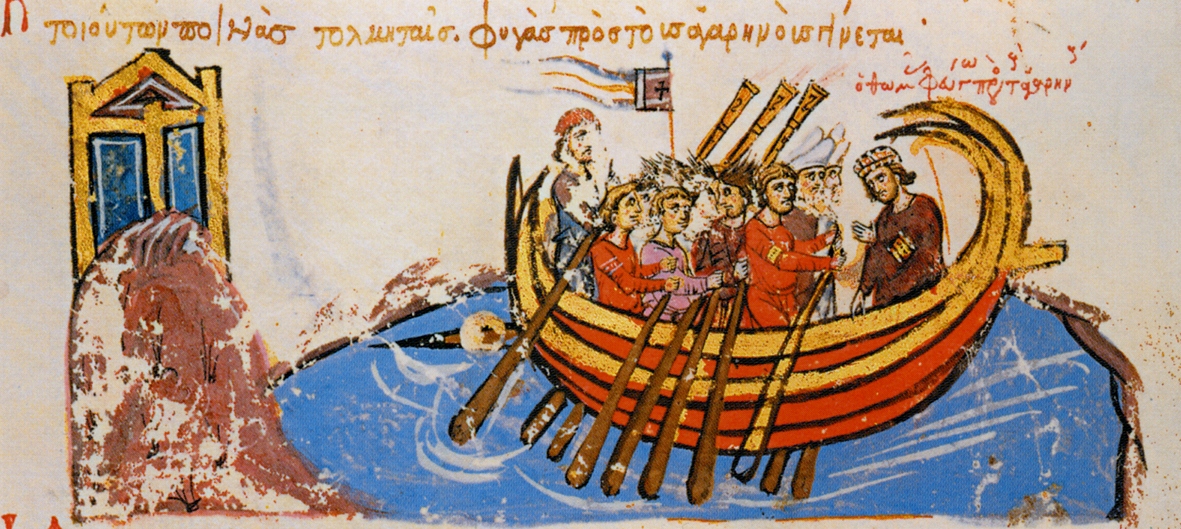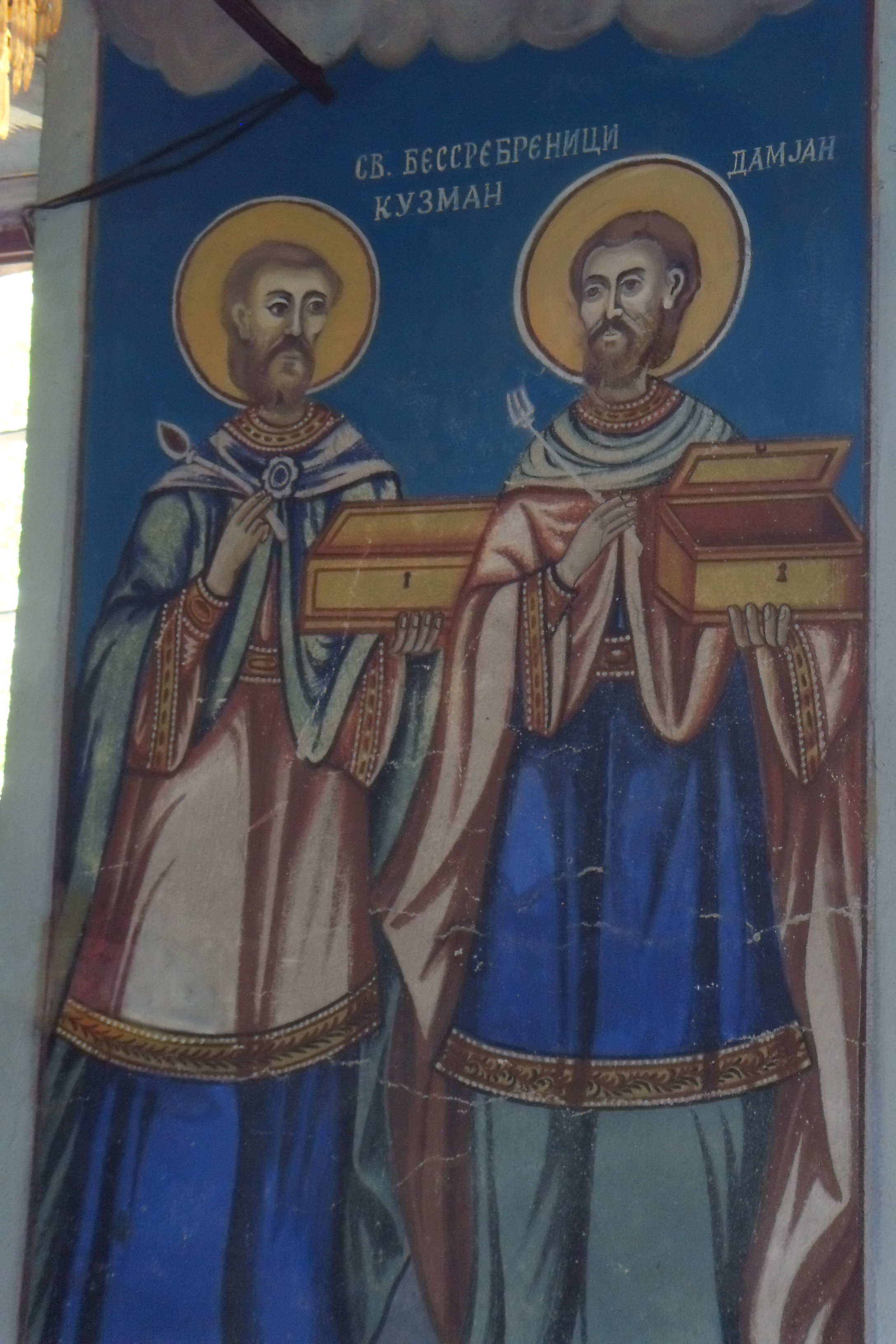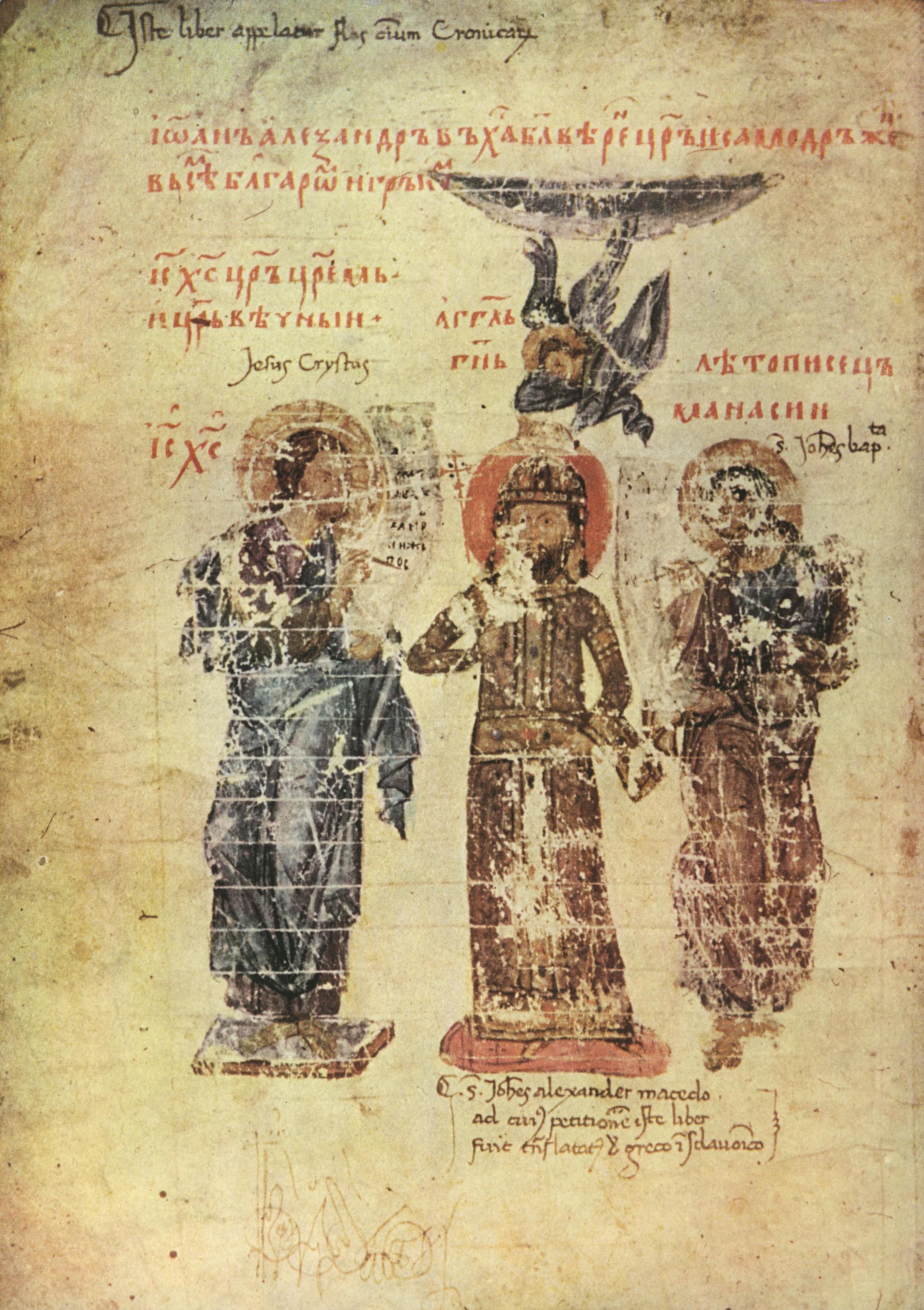|
Panion
Panion ( el, Πάνιον) or Panias (Πανιάς), in early Byzantine times known as Theodosiopolis (Θεοδοσιούπολις) and in later Byzantine and Ottoman Empire, Ottoman times Panidos (Greek: Πάνιδος, Turkish: ''Banıdoz''), was a town in Eastern Thrace on the coast of the Marmara Sea, on the site of the modern settlement of Barbaros, Tekirdağ, Barbaros in Tekirdağ Province, Turkey. History The settlement dates to antiquity, perhaps founded by the Thracians. Known as ''Panion'', ''Panias'', or ''Panis'' ("place dedicated to Pan (god), Pan") in antiquity. Early and middle Byzantine periods The city walls were restored sometime between 383 and 403, and shortly after, in , the historian Priscus was born in the city. At around the same time the city was officially renamed to Theodosiopolis, and the name was used in tandem with Panion for some time thereafter. The "bishop of new Theodosiopolis" (''episcopus novae Theodosiopolis'') Babylas addressed a letter to E ... [...More Info...] [...Related Items...] OR: [Wikipedia] [Google] [Baidu] |
Thomas The Slav
Thomas the Slav ( gr, Θωμᾶς ὁ Σλάβος, Thōmas ho Slavos, – October 823) was a 9th-century Byzantine Empire, Byzantine military commander, most notable for leading a wide-scale revolt in 821–23 against Byzantine emperor, Emperor Michael II the Amorian (). An army officer of Early Slavs, Slavic origin from the Pontus (region), Pontus region (now north-eastern Turkey), Thomas rose to prominence, along with the future emperors Michael II and Leo V the Armenian (), under the protection of general Bardanes Tourkos. After Bardanes' failed rebellion in 803, Thomas fell into obscurity until Leo V's rise to the throne, when Thomas was raised to a senior military command in central Asia Minor. After the murder of Leo and usurpation of the throne by Michael the Amorian, Thomas revolted, claiming the throne for himself. Thomas quickly secured support from most of the Theme (Byzantine district), themes (provinces) and troops in Asia Minor, defeated Michael's initial cou ... [...More Info...] [...Related Items...] OR: [Wikipedia] [Google] [Baidu] |
Priscus
Priscus of Panium (; el, Πρίσκος; 410s AD/420s AD-after 472 AD) was a 5th-century Eastern Roman diplomat and Greek historian and rhetorician (or sophist)...: "For information about Attila, his court and the organization of life generally in his realm we have the authentic and reliable evidence of contemporary Greek historian Priscus, who accompanied Maximinus, the head of the Byzantine embassy, in 448." Biography Priscus was born in Panion (located in Thrace) between 410 and 420 AD. In 448/449 AD, he accompanied Maximinus, the head of the Byzantine embassy representing Emperor Theodosius II (r. 402–450), on a diplomatic mission to the court of Attila the Hun. While there, he met and conversed with a Greek merchant, dressed in "Scythian" (or Hunnic) fashion, who was captured eight years earlier () when the city of Viminacium (located on the Danube east of modern-day Belgrade) was sacked by the Huns.: "Priscus of Panium met one of these in Attila's camp. He was, he said ... [...More Info...] [...Related Items...] OR: [Wikipedia] [Google] [Baidu] |
Byzantine
The Byzantine Empire, also referred to as the Eastern Roman Empire or Byzantium, was the continuation of the Roman Empire primarily in its eastern provinces during Late Antiquity and the Middle Ages, when its capital city was Constantinople. It survived the fragmentation and fall of the Western Roman Empire in the 5th century AD and continued to exist for an additional thousand years until the fall of Constantinople to the Ottoman Empire in 1453. During most of its existence, the empire remained the most powerful economic, cultural, and military force in Europe. The terms "Byzantine Empire" and "Eastern Roman Empire" were coined after the end of the realm; its citizens continued to refer to their empire as the Roman Empire, and to themselves as Romans—a term which Greeks continued to use for themselves into Ottoman times. Although the Roman state continued and its traditions were maintained, modern historians prefer to differentiate the Byzantine Empire from Ancient Rome a ... [...More Info...] [...Related Items...] OR: [Wikipedia] [Google] [Baidu] |
Second Council Of Nicaea
The Second Council of Nicaea is recognized as the last of the first seven ecumenical councils by the Eastern Orthodox Church and the Catholic Church. In addition, it is also recognized as such by the Old Catholics, the Anglican Communion, and others. Protestant opinions on it are varied. It met in AD 787 in Nicaea (site of the First Council of Nicaea; present-day İznik, Bursa, in Turkey), to restore the use and veneration of icons (or holy images),Gibbon, p.1693 which had been suppressed by imperial edict inside the Byzantine Empire during the reign of Leo III (717–741). His son, Constantine V (741–775), had held the Council of Hieria to make the suppression official. Background The veneration of icons had been banned by Byzantine Emperor Constantine V and supported by his Council of Hieria (754 AD), which had described itself as the seventh ecumenical council. The Council of Hieria was overturned by the Second Council of Nicaea only 33 years later, and has also bee ... [...More Info...] [...Related Items...] OR: [Wikipedia] [Google] [Baidu] |
Pantokrator Monastery
'' '' tr, Zeyrek Camii'' , image = Molla Zeyrek Camii.jpg , image_size = 300px , caption =The mosque viewed from north east. From left to right, one can see the apses of the ''Church of Christ Pantocrator'', the ''Imperial Chapel'' and the ''Church of the Theotokos Eleousa''. , image_upright = 1.2 , map_type = Istanbul Fatih , map_size = , map_caption = Location in the Fatih district of Istanbul , location = Istanbul, Turkey , coordinates = , latitude = , longitude = , religious_affiliation = Sunni Islam , rite = , region = , state = , province = , territory = , prefecture = , sector = , consecration_year = Shortly after 1453 , status = , architecture = yes , architect = , architecture_type ... [...More Info...] [...Related Items...] OR: [Wikipedia] [Google] [Baidu] |
Sæwulf
Sæwulf ( 1102 – 1103) was probably the first English pilgrim to Jerusalem following its conquest in the First Crusade. His Latin written account of his pilgrimage tells of an arduous and dangerous journey; and Sæwulf's descriptive narrative provides scholars brief but significant insight into sea travel across the Mediterranean to the new Kingdom of Jerusalem that was established soon after the end of the First Crusade. History Jerusalem fell to the forces of the First Crusade in 1099 after a successful siege of the city. Sæwulf's telling of his travels on pilgrimage to the Holy Land start in Apulia on 13 July 1102 with his boarding ship at Monopoli. Via many ports, he made landfall at Jaffa and began a tour of Palestine, including Jericho and Hebron. The narrative of his journey to Jerusalem described the prevailing lawlessness of the Judean hills at the time. He noted the road between Jaffa and Jerusalem "was very dangerous...because the Saracens are continually plo ... [...More Info...] [...Related Items...] OR: [Wikipedia] [Google] [Baidu] |
Constantinople
la, Constantinopolis ota, قسطنطينيه , alternate_name = Byzantion (earlier Greek name), Nova Roma ("New Rome"), Miklagard/Miklagarth (Old Norse), Tsargrad ( Slavic), Qustantiniya (Arabic), Basileuousa ("Queen of Cities"), Megalopolis ("the Great City"), Πόλις ("the City"), Kostantiniyye or Konstantinopolis ( Turkish) , image = Byzantine Constantinople-en.png , alt = , caption = Map of Constantinople in the Byzantine period, corresponding to the modern-day Fatih district of Istanbul , map_type = Istanbul#Turkey Marmara#Turkey , map_alt = A map of Byzantine Istanbul. , map_size = 275 , map_caption = Constantinople was founded on the former site of the Greek colony of Byzantion, which today is known as Istanbul in Turkey. , coordinates = , location = Fatih, İstanbul, Turkey , region = Marmara Region , type = Imperial city , part_of = , length = , width ... [...More Info...] [...Related Items...] OR: [Wikipedia] [Google] [Baidu] |
First Crusade
The First Crusade (1096–1099) was the first of a series of religious wars, or Crusades, initiated, supported and at times directed by the Latin Church in the medieval period. The objective was the recovery of the Holy Land from Islamic rule. While Jerusalem had been under Muslim rule for hundreds of years, by the 11th century the Seljuk takeover of the region threatened local Christian populations, pilgrimages from the West, and the Byzantine Empire itself. The earliest initiative for the First Crusade began in 1095 when Byzantine emperor Alexios I Komnenos requested military support from the Council of Piacenza in the empire's conflict with the Seljuk-led Turks. This was followed later in the year by the Council of Clermont, during which Pope Urban II supported the Byzantine request for military assistance and also urged faithful Christians to undertake an armed pilgrimage to Jerusalem. This call was met with an enthusiastic popular response across all social classes in ... [...More Info...] [...Related Items...] OR: [Wikipedia] [Google] [Baidu] |
Holy Unmercenaries
Holy Unmercenaries ( el, Άγιοι Ανάργυροι, Agioi Anárgyroi) is an epithet applied to a number of Christian saints who did not accept payment for good deeds. These include healers or Christian physicians who, in conspicuous opposition to medical practice of the day, tended to the sick free of charge. List of Holy Unmercenaries Saints bearing this title include: * Zenaida and Philonella () * Saint Tryphon () * Martyr Thalelaeus the Unmercenary, at Anazarbus in Cilicia (284) 20 Μαΐου. Μέγας Συναξαριστ ... [...More Info...] [...Related Items...] OR: [Wikipedia] [Google] [Baidu] |
Constantine Manasses
Constantine Manasses ( el, Κωνσταντῖνος Μανασσῆς; c. 1130 - c. 1187) was a Byzantine chronicler who flourished in the 12th century during the reign of Manuel I Komnenos (1143-1180). He was the author of a chronicle or historical synopsis of events from the creation of the world to the end of the reign of Nikephoros Botaneiates (1081), sponsored by Irene Komnene, the emperor's sister-in-law. It consists of about 7000 lines in political verse. It obtained great popularity and appeared in a free prose translation; it was also translated into Bulgarian in the 14th century.Chronicle edition: Bekker, Bonn 1837; the Bulgarian translation, ''Cronica lui Constantin Manasses'', by Ioan Bogdan and I. Bianu, Bucharest, 1922. In 1969 Bulgaria issued two sets of stamps depicting important scenes of the chronicle, to celebrate it. Manasses also wrote the poetical romance ''Loves of Aristander and Callithea'', also in political verse. It is only known from the fragments prese ... [...More Info...] [...Related Items...] OR: [Wikipedia] [Google] [Baidu] |
Oikonomos
''Oikonomos'' ( el, οἰκονόμος, from - 'house' and - 'rule, law'), Latinization of names, latinized œconomus, oeconomus, or economos, was an Ancient Greek word meaning "household manager." In Byzantine empire, Byzantine times, the term was used as a title of a manager or treasurer of an organization. It is a title of honor awarded to priests in the Eastern Orthodox Church. It is also a title in the Roman Catholic Church. In Canon 494 of the 1983 Code of Canon Law, an œconomus is the diocesan finance officer. In Ancient Greece Role in the ''oikos'' The ''oikos'' (household) was the base unit for the organization of social, political, and economic life in the Ancient Greek world. The person in charge of all its affairs was the ''oikonomos''. The ''oikos'' was composed of a nuclear family as well as extended family members such as grandparents or unmarried female relatives. The husband of the core nuclear family was generally the ''oikonomos''. The ancient Greek w ... [...More Info...] [...Related Items...] OR: [Wikipedia] [Google] [Baidu] |
Archon
''Archon'' ( gr, ἄρχων, árchōn, plural: ἄρχοντες, ''árchontes'') is a Greek word that means "ruler", frequently used as the title of a specific public office. It is the masculine present participle of the verb stem αρχ-, meaning "to be first, to rule", derived from the same root as words such as monarch and hierarchy. Ancient Greece In the early literary period of ancient Greece the chief magistrates of various Greek city states were called ''archontes''. The term was also used throughout Greek history in a more general sense, ranging from "club leader" to "master of the tables" at '' syssitia'' to "Roman governor". In Athens, a system of three concurrent archons evolved, the three office holders being known as ''archon eponymos'' (), the ''polemarch'' (), and the ''archon basileus'' (). According to Aristotle's '' Constitution of the Athenians'', the power of the king first devolved to the archons, and these offices were filled from the aristocracy by el ... [...More Info...] [...Related Items...] OR: [Wikipedia] [Google] [Baidu] |







